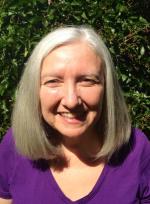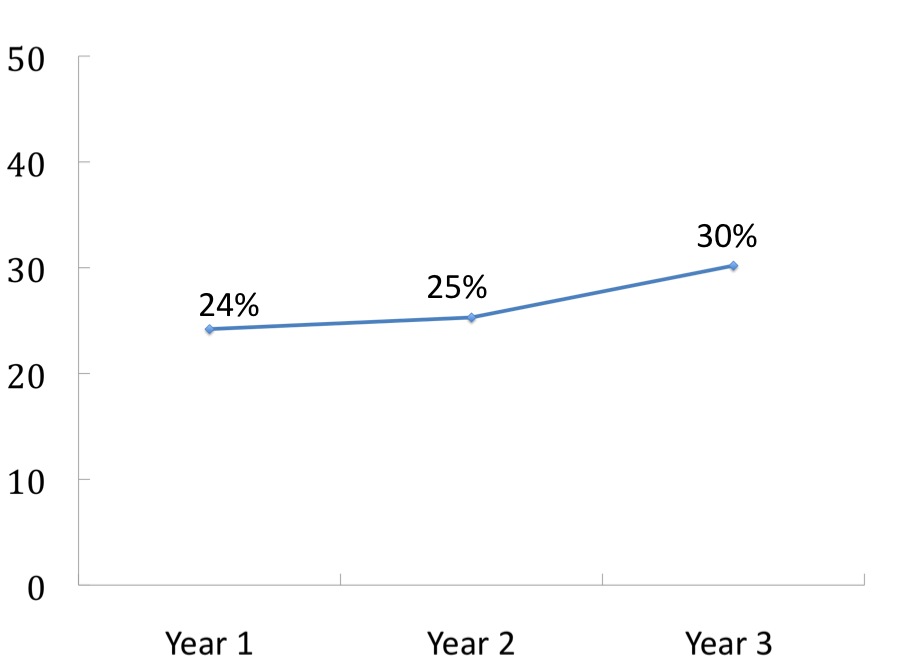


Theme
4II Learning / eLearning 1
INSTITUTION
(1) Dept of Pediatrics, University of Alberta
(2) Discipline of Pediatrics, Memorial University (3) Eastern Health
(4) Alberta Health Services (5) Depts of Pediatrics & Community Health Sciences, Univ of Calgary

Physicians require knowledge of normal child development in order to provide anticipatory guidance and recognize abnormal developmental trajectories. However, family physicians and pediatricians have identified gaps in their knowledge or training in this area.
We are conducting a longitudinal study of medical students’ knowledge of developmental milestones. We previously reported that students’ baseline knowledge of milestones was poor [1] and that it did not improve significantly after preclinical education [2].
All medical students at the University of Alberta were eligible to participate. We assessed medical students’ knowledge of developmental milestones at the start of Year 1, at the end of preclinical teaching in Year 2 and after the pediatrics clerkship rotation in Year 3.
The students’ pre-clinical learning experiences in child development included lectures, a problem-based learning case done in small groups, and a half-day clinical skills session in which they rotated through 3 stations with normal parent-child dyads (infant, toddler, preschooler) and a faculty facilitator. Their clerkship experience included 3 lectures and exposure to ambulatory clinics.
Knowledge of developmental milestones was assessed at each time point using 17 questions on the age at which most children attain certain developmental milestones. The questionnaire has previously been administered to a general population sample [3]. Milestones were categorized as either motor or non-motor. Repeated measures ANOVA was used to assess the significance of changes over time. Bonferroni post-hoc tests were used for comparisons between individual time points.
Students’ knowledge of developmental milestones changed significantly over the first three years of medical school. However, knowledge of child development remains weak.
Given the substantial losses to follow-up, it is uncertain whether the participating students are representative of the entire class. The students’ knowledge will be reassessed at the end of medical school in Year 4.
We would like to thank the medical students of Class of 2014 Faculty of Medicine and Dentistry at the University of Alberta for their ongoing participation in this project.
- MacPherson P, North CR, Leew S, Tough S, Andrews D. Room to grow: Medical students’ baseline knowledge of child development. Paediatr Child Health. 2011;16 Suppl A.
- MacPherson P, North CR, Leew S, Tough S, Andrews D. Late bloomers?: Second year medical students knowledge of child development. Paediatr Child Health. 2013; 18 Suppl A:33A-34A
- Rikhy S, Tough S, Trute B, et al. Gauging knowledge of developmental milestones among Albertan adults: A cross-sectional survey. BMC Public Heath. 2010;10:183-91.
Loss to follow-up
26 medical students completed the survey in all three time points. This represents a 75% loss to follow-up
Knowledge of developmental milestones is poor among third year medical students.
Overall, third year medical students answered 30% of questions correctly. Students answered 45% of questions regarding motor milestones correctly. Students correctly answered 26% of questions on non-motor milestones.
Overall knowledge of developmental milestones changed over the three year period (p<0.05)

Knowledge of motor milestones did not change significantly over time
Students answered 48% of questions correctly in Year 1, 47% in Year 2 and 45% in Year 3.
Knowledge of non-motor milestones was significantly better in Year 3 compared to Year 1 or Year 2.

 Send Email
Send Email